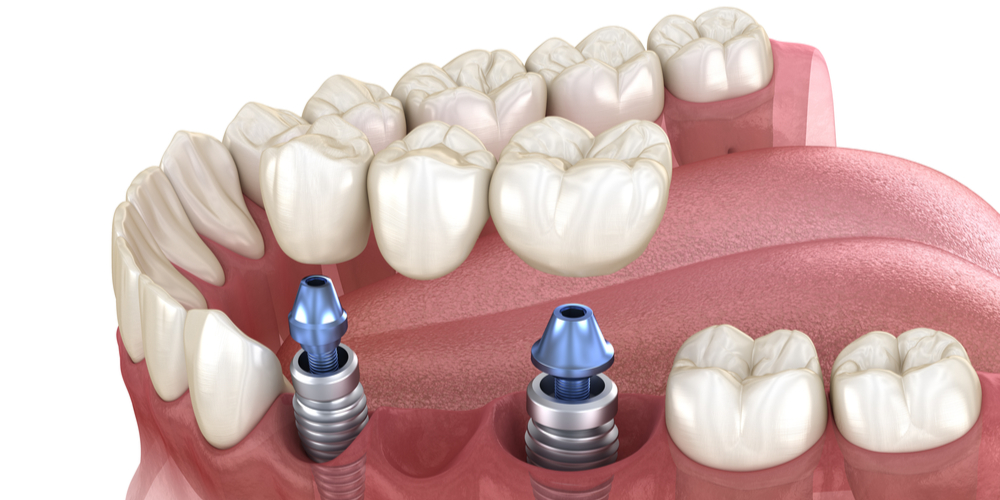
A dental bridge is a device which is used as a replacement for missing teeth. It consists of a false tooth – known as a ‘pontic’ which is flanked by two crowns. The pontic slots neatly into a gap left by a missing teeth whilst the two crowns fit over teeth on each side of the pontic. The bridge is held in place with bands or dental cement.
If properly cared for a dental bridge will last for up to 15 years.
There are 3 types of dental bridges which are:
- Cantilever bridge: this is used if there are teeth on one side of a gap (previously occupied by a tooth). This bridge is fixed to these teeth and as a result, is only suitable for minimal stress situations. Mainly used on the front teeth.
- Fixed bridge: a traditional form of bridge and the most commonly used. It consists of a pontic and two crowns and is fixed permanently in place.
- Resin bonded bridge: also known as a ‘Maryland bonded bridge’. This bridge does not contain any crowns – just a plastic false tooth which is inserted into a space between the front teeth. It is held in place with metal bands which are bonded to the teeth using cement or resin.
Dental bridges are fabricated from porcelain, porcelain-fused with metal or gold.
REASONS FOR A BRIDGE
A bridge is an acceptable solution to the problem of missing teeth. The loss of a tooth or several teeth may not seem that important but it can have serious ramifications. Tooth loss causes the remaining teeth to drift inwards, pulling them out of position which leads to further problems, e.g. tooth decay, gum disease and malocclusion.
The empty socket in the jawbone loses density which results in a smaller, thinner jaw, affecting your ability to eat and speak. It also causes the facial muscles to sag inwards which has a negative effect on your appearance.
This is why it is important to replace missing teeth as soon as possible.
DENTAL BRIDGE PROCEDURE
A dental bridge is fitted in two stages.
The first stage: the dentist will reshape the teeth either side of the gap so that they are ready to receive the bridge. This is followed by the taking of an impression of your teeth using dental putty which acts as a blueprint for your bridge.
This impression is sent away to a dental laboratory where it is used to fabricate new crowns and your bridge. You will be fitted with a temporary bridge in the meantime.
The second stage: the dentist removes the temporary bridge and replaces it with your new, permanent bridge. It is checked and adjusted before being cemented in place.
You will be asked to visit on several occasions so that the condition and fit of the bridge can be checked.
Alternatives to a bridge are dentures or dental implants.